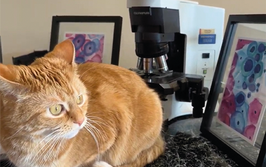A Win-Win-Win Situation
Consolidation can improve pathology services for administrators, laboratory staff, and patients

My hospital specializes in pediatric medicine, which means that our patients – and thus our jobs – are unique. The lab at Great Ormond Street Hospital (GOSH) offers a wide range of specialized clinical laboratory services to both support the tertiary services our hospital provides and to act as a specialist referral center for institutions around the world. For me, that involves carrying out routine and specialist analytical testing on patient biological samples to help clinicians diagnose, treat, and monitor recovery from infectious diseases. My colleagues and I use tailor-made equipment and technologies to test a vast range of biological samples, including extraordinarily small sample volumes from some of our youngest patients.
Our department – Microbiology, Virology, and Infection Control – started as two separate entities, but we have now consolidated our molecular diagnostics into a single service. Within that service, our microbiology lab operates 24 hours a day, seven days a week; the virology lab operates during normal working hours, but also offers a weekend out-of-hours service for the prevention, investigation, and control of healthcare-associated infection in patients and staff. Why did we decide to consolidate? To enhance our turnaround times, increase our testing repertoire, and provide a more robust service to benefit our patient population.
And we have achieved all of these things. We have a variety of routine tests available from broad-range 16S (bacterial) and 18S (fungal) sequencing to viral neurological PCR screening of cerebrospinal fluid. Moreover, we are constantly developing new methods of investigation to make best use of diagnostic innovations. This year, for instance, our virology department researched the use of cutting-edge RNAseq for deep sequencing of brain tissue. We hope that this will help us pinpoint the exact viruses and bacteria causing life-threatening brain infections in children, ensuring that they receive rapid and appropriate treatment. The success of this research will provide us with a unique platform to review samples from across Europe, and we hope it will revolutionize how doctors treat encephalitis.
Pressure on pathology services to consolidate, reconfigure, or modernize is nothing new. Lord Carter’s 2006 and 2008 reports – independent reviews of NHS pathology services in England – recommended consolidation of services “to improve quality, patient safety and efficiency (1).” At the same time, it is important to recognize that pathology is a diverse group of clinical specialties; what works for one discipline may not work for another. Some pathology services must be located close to the patients and healthcare professionals who rely on them, whereas others can be combined to serve larger areas. In our case, to ensure high-quality service while reducing costs, consolidation was the right decision.
But that’s not to say it was easy. The consolidation of our molecular microbiology services was a resource-intensive project that required a dedicated team and the support of both management and operations teams. It was a challenge to simultaneously change multiple aspects of our work (logistics, processes, facilities, equipment, IT infrastructure, and staffing) and we – the staff – were understandably somewhat hesitant. To that end, it was important for our integration to have four main objectives: i) to maintain and improve customer service across networks, ii) to derive economies of scale and cost benefits, iii) to control for and minimize risk during and after the transition process, and iv) to minimize the disruption and impact on staff.
After a transition period, I can comfortably say that the outcome has been positive. Our clinical scientists are now best located for effective results; we can collaborate easily with subspecialty experts; we have research and development opportunities; we can plan for training and succession; overall, our service is larger and more resilient than ever. I feel that, because our service is clinically led and our focus is on providing valuable services to our patients, consolidation was a success – and it has improved our turnaround times, allowing us to work not just more, but better. The service costs less to run, it’s easier to spread workloads and share the burden, and our patients receive accurate results quickly: a win-win-win situation.
- Lord Carter of Coles, “Report of the Second Phase of the Independent Review of NHS Pathology Services in England” (2008). Available at: bit.ly/2zkXFZ3. Accessed November 21, 2018.
Pathology Quality Manager/Governance Lead (Chartered Scientist).




















